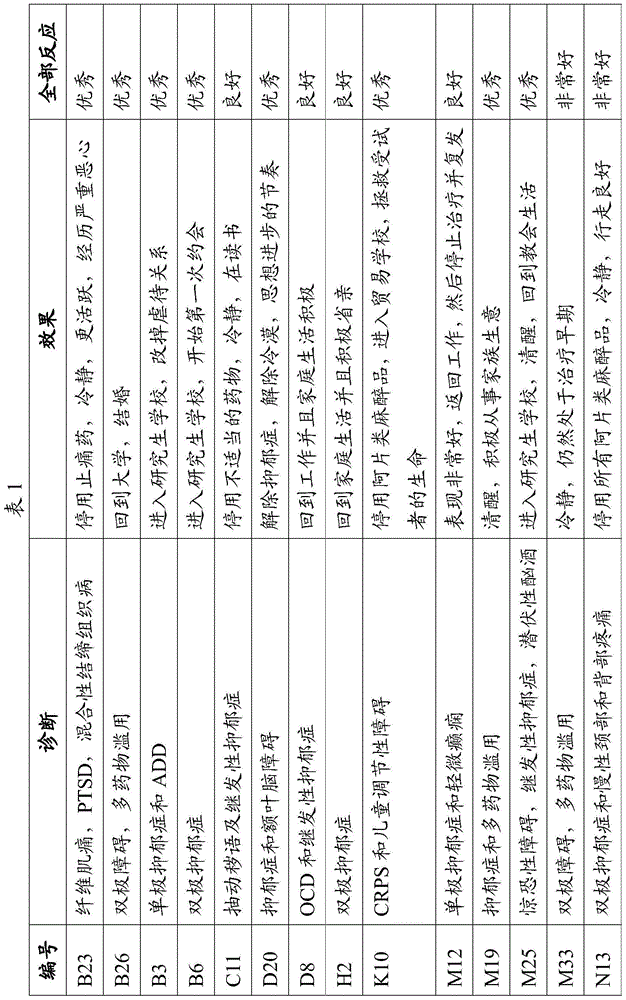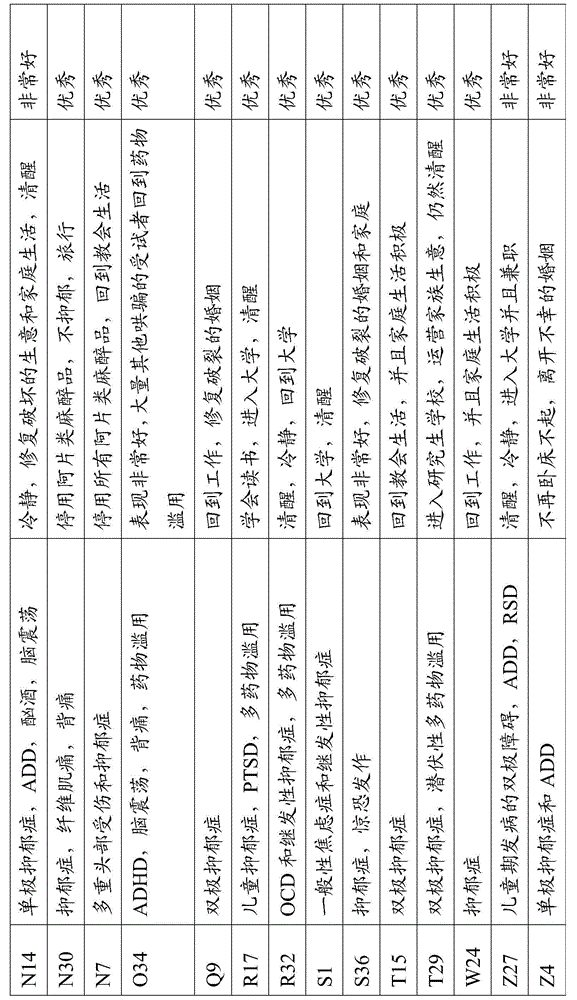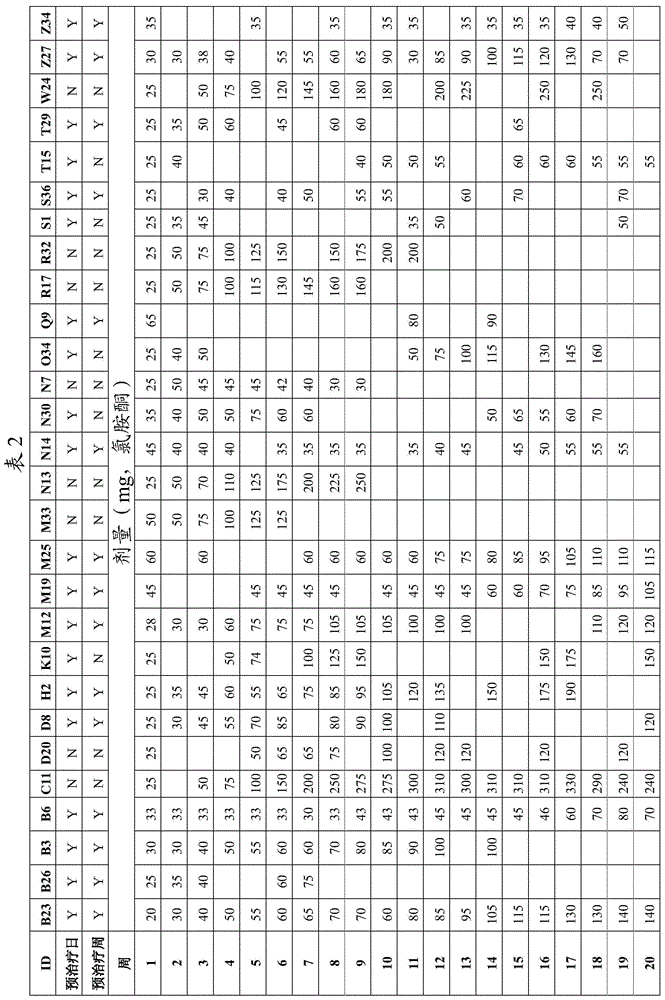Treatment of thalamocortical dysrhythmia
An abnormal rhythm, thalamocortical technology, applied in diseases related to thalamocortical abnormal rhythm, to treat patients with abnormal thalamocortical rhythm disorders, can solve the problem that ketamine does not provide sustained relief such as suicide or depression
- Summary
- Abstract
- Description
- Claims
- Application Information
AI Technical Summary
Problems solved by technology
Method used
Image
Examples
example 1
[0048] Example 1: TMS / Ketamine Therapy
[0049] Thirty-five patients were treated with ketamine combined with TMS. All 28 patients who completed the treatment shown in Table 1 had a positive effect after completing the treatment regimen shown in Table 2 (Table 1 and Table 2 are located at the end of the description before the claims). To simplify the presentation in Table 2, patients who received more than one treatment per week were indicated as having received one treatment in that week. Likewise, intervals are rounded to the nearest week.
[0050] Some patients received a pretreatment (PT) of 3 days to two weeks (usually 6 or 7 days) with daily TMS treatment (generally indicated as "PT days" or "PT weeks" in Figure 2). Others received pre-TMS therapy before combination therapy. Although most patients received pretreatment or pretreatment, some patients received neither pretreatment nor pretreatment. Since pretreatment was more lenient than pretreatment of several days, ...
example 2
[0052] Example 2: TLVES / Ketamine Therapy
[0053] Three patients were initially treated with TMS / ketamine as described above and improved significantly. However, these patients are more vulnerable and less robust than other members of the group.
[0054] Patients were treated with tACS or tRNS by defining the anode at F3 and cathode at F8 relative to the net current. Electrical stimulation of the electrodes was applied for about 20 minutes. Ketamine was started after 5 minutes and a total of 0.5 mg / kg to 5.0 mg / kg was continuously infused for 15-50 minutes. For tACS, the parameter is 1200 uA (no offset) or 1200 uA (1000 uA offset). For tRNS, the parameter is 1300 microampere or 2000 microampere (offset of 1000 microampere). Thanks to the use of TLVES / ketamine, all three patients have been able to achieve the same therapeutic effect as TMS / ketamine with less post-treatment fatigue.
PUM
 Login to View More
Login to View More Abstract
Description
Claims
Application Information
 Login to View More
Login to View More - R&D Engineer
- R&D Manager
- IP Professional
- Industry Leading Data Capabilities
- Powerful AI technology
- Patent DNA Extraction
Browse by: Latest US Patents, China's latest patents, Technical Efficacy Thesaurus, Application Domain, Technology Topic, Popular Technical Reports.
© 2024 PatSnap. All rights reserved.Legal|Privacy policy|Modern Slavery Act Transparency Statement|Sitemap|About US| Contact US: help@patsnap.com










